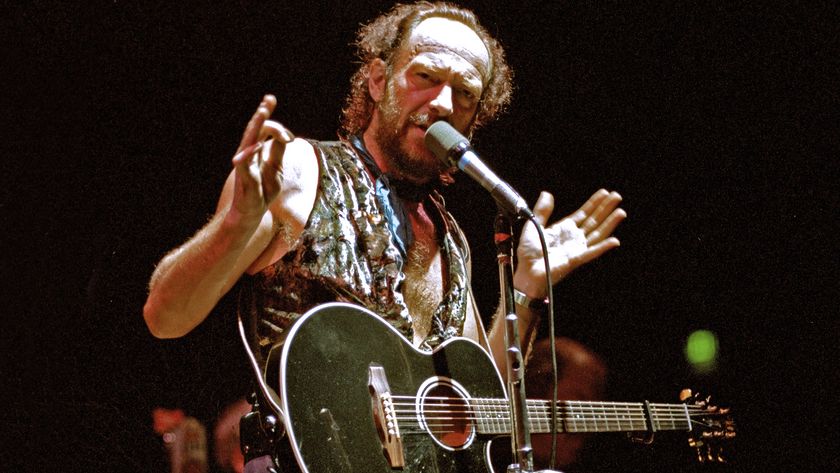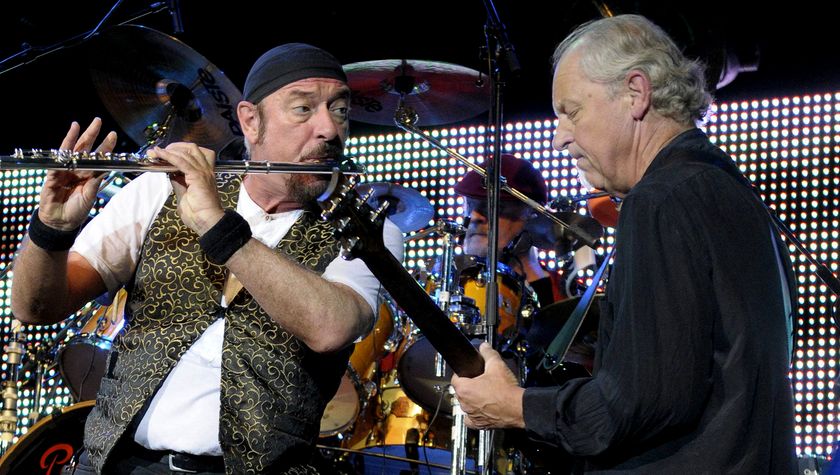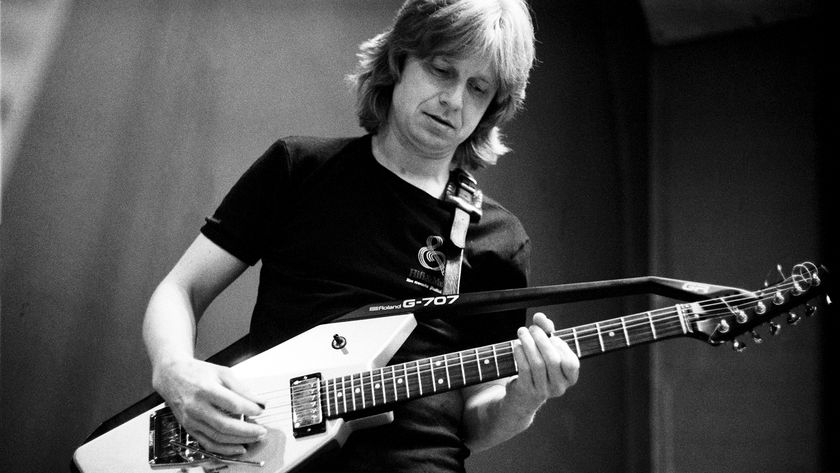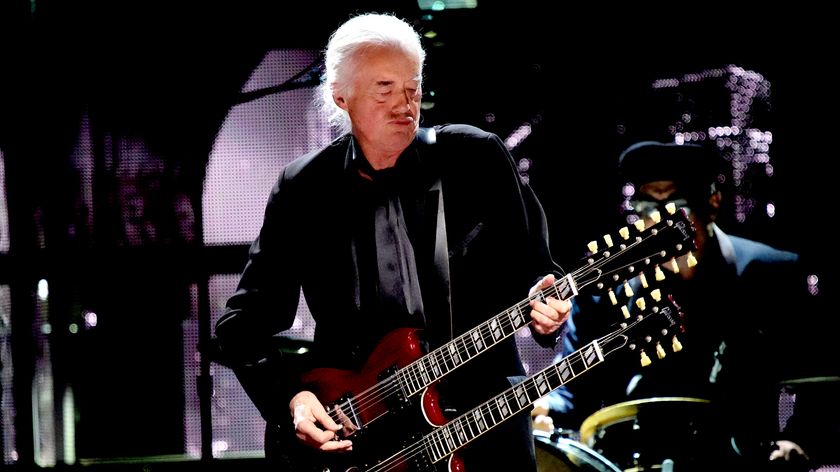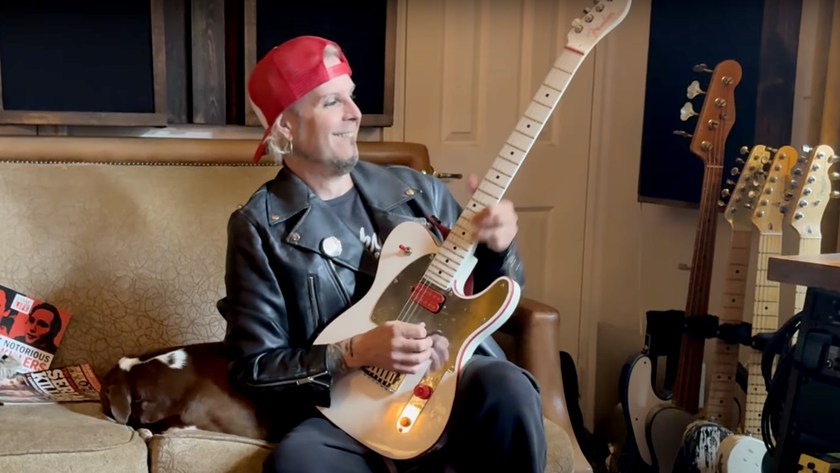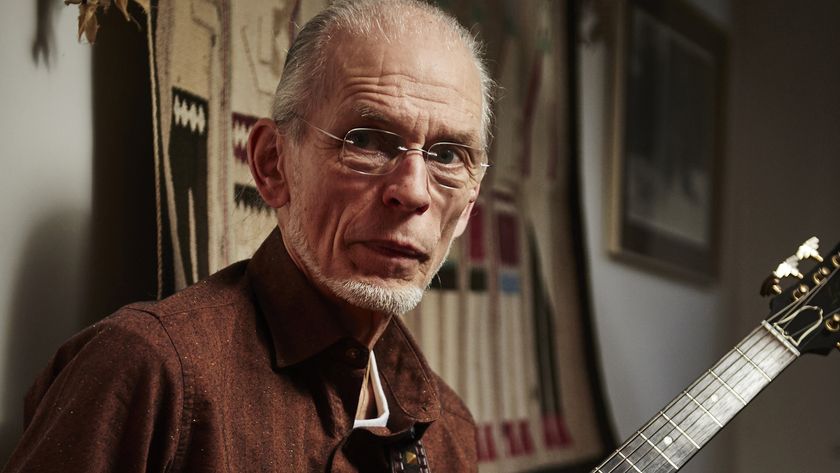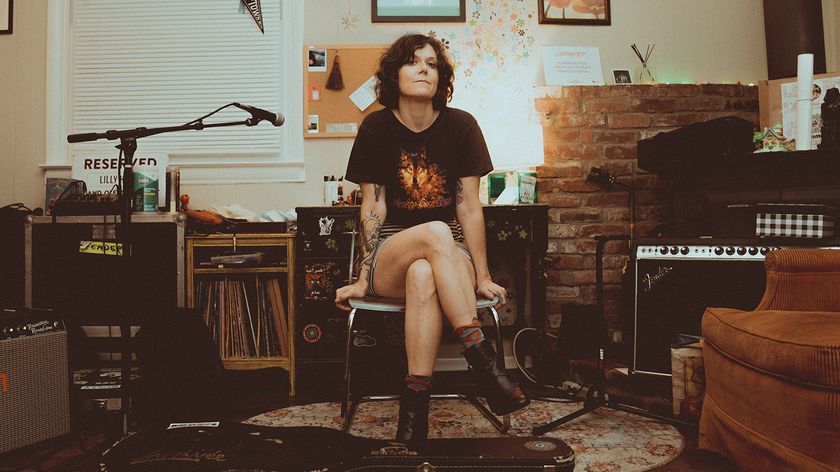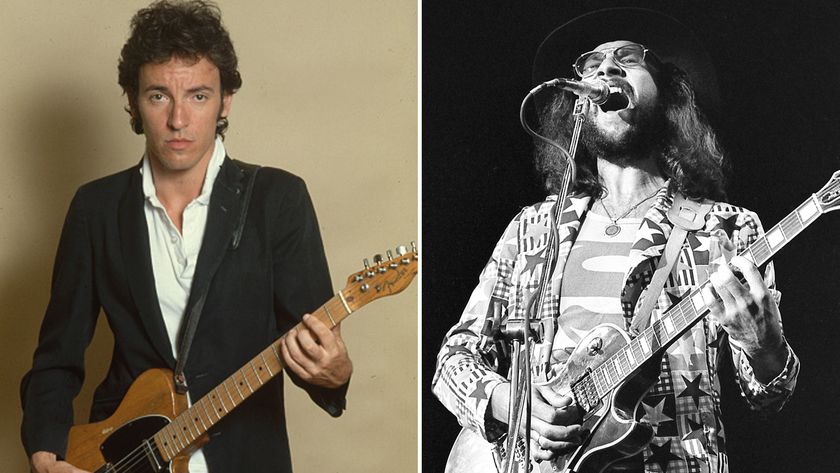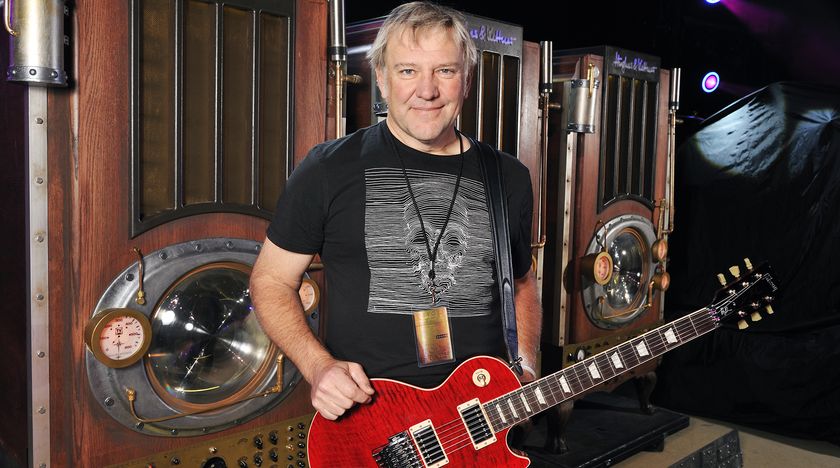“It was me who said Clapton was God. I was the one who kind of found him in my God-sort-of dreams”: Peter Green on his time with John Mayall and Fleetwood Mac, and wrestling with his demons
Having blown minds with Mayall and then formed Fleetwood Mac, the late blues guitar genius suddenly walked away at the peak of the latter band's first run of commercial success. He would endure years of horrors before making it back to the stage
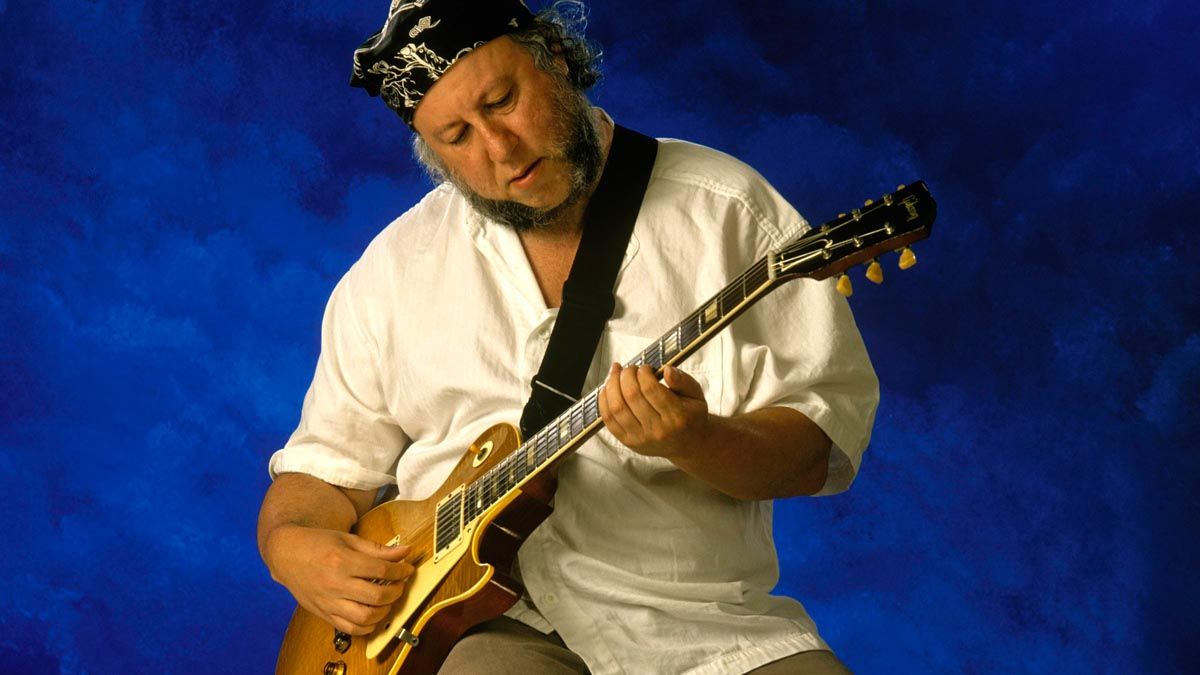
When the guitarist known as the King of the Blues says, “He has the sweetest tone I ever heard. He was the only one who gave me cold sweats,” you know it’s high praise. And that’s exactly what B.B. King said about the late Peter Green, who passed away on July 25, 2020.
A major figure in the late-1960s British blues boom, Green was considered by many to be the best electric blues guitarist of his time. “Peter in his prime in the ’60s was just without equal,” said John Mayall, who hired him as the Bluesbreakers’ guitarist when Eric Clapton left to form Cream.
For a few years it seemed Green would be among a small group of guitarists to shape the direction of blues-rock. He formed Fleetwood Mac in ’67, but their success was short-lived for the young guitarist.
By 1970, his mental health had begun to deteriorate, fueled by excessive drug use. By the decade’s end, he was a casualty of the rock era. “I was very critically ill for a while there, you might say,” he told The Los Angeles Times in 1998. “I’m not really back yet.”
The Rock and Roll Hall of Fame… Inducted? Vinducted? Theraducted? I don’t really accept anything like that
He was born Peter Allen Greenbaum on October 29, 1946, in Bethnal Green, North London. When he was 10, an older brother brought home a guitar, and Green had found his calling. He developed quickly on the instrument, becoming a formidable player. He was just 19 in 1966, when Mayall hired him.
Despite Clapton’s legendary status, Green proved a very worthy successor both onstage and on record, contributing stellar guitar work with his iconic 1959 Gibson Les Paul Standard fed through a Marshall amp on Mayall’s revolutionary A Hard Road album. (The guitar, dubbed Greeny, was purchased by Metallica’s Kirk Hammett in 2014 for an undisclosed sum.)
Green made his vocal debut on two of the album’s tracks, You Don’t Love Me and The Same Way, and was featured on a pair of instrumentals: a cover of Freddie King’s The Stumble and his own composition, The Super-Natural. The latter track demonstrated not only Green’s distinctive tone with his ’59 ’Burst but also his beautifully quivering vibrato and ability to sustain notes for up to 10 seconds using harmonic feedback.
But his time with Mayall was short. In 1967, he formed his own band, Peter Green’s Fleetwood Mac, featuring Jeremy Spencer (a brilliant 19-year-old guitarist many considered Green’s equal), bassist Bob Brunning, and drummer Mick Fleetwood, who had been fired by Mayall.
The lineup solidified when John McVie, another Mayall alumni, replaced Brunning. With the addition of Danny Kirwan the following year as a third guitarist, the band’s name was shortened to simply Fleetwood Mac.
A series of British hits soon followed: Black Magic Woman, Oh, Well, The Green Manalishi (With the Two Prong Crown), Man of the World, and Albatross, which George Harrison acknowledged was the inspiration for the Beatles’ Abbey Road track Sun King.
Remarkably, that year, 1969, Fleetwood Mac sold more singles in Britain than the Beatles and the Rolling Stones combined. But amid the group’s rise, Green began consuming prodigious amounts of LSD and mescaline.
He grew a beard, performed in long white robes with a crucifix, and expressed disillusionment about fame and money, while his behavior on- and offstage became increasingly erratic. After a May 1970 concert, he walked away from the band that he had started.
Things went from bad to worse over the next years. In 1977, when Fleetwood Mac’s most commercially successful lineup was enjoying massive popularity with Rumours, Green, suffering from schizophrenia, was in a psychiatric hospital undergoing electroconvulsive shock therapy.
Following his release, the guitarist was never really able to get his career back on track, even after his old friend, guitarist Nigel Watson, convinced him in 1997 to join forces in a new band they called the Peter Green Splinter Group.
The band released eight albums in less than seven years, but received little attention. It was readily apparent to anyone attending the band’s shows that promoters were only using Green’s name to sell tickets. Watson, in addition to doing all the singing, was providing the lead guitar work, with Green not contributing much musically.
I was still taking LSD one night before I left my house and smashed a car windscreen with a jar. I was hearing voices. I wanted them to stop, but they wouldn’t stop
When I spoke with Green for this interview in 2003, around the release of his record Reaching the Cold 100, he expressed regret for his drug use and spoke vividly of one harrowing incident.
“I was still taking LSD one night before I left my house and smashed a car windscreen with a jar,” he said. “I was hearing voices. I wanted them to stop, but they wouldn’t stop. I blamed the drugs for what I did. That’s what happens when you take LSD. Your mind plays tricks on you when you’re hallucinating. But that’s all in the past now.” Despite his years in the wilderness, Green was never forgotten.
When Mick Fleetwood launched an all-star tribute concert for him at the London Palladium on February 25, 2020, prominent musicians and longtime admirers of his playing and music – including Pete Townshend, Billy Gibbons, David Gilmour, Bill Wyman, and Mayall – turned out to pay homage to the guitarist, who had done so much for blues. Sadly, Green was too ill to attend.
Reading this unpublished interview again after so many years reminded me of Peter Green’s innate ability to charm and give generously, qualities that were equally obvious in his music.
Peter, what was the first music you heard as a boy that really inspired you?
“My brother used to bring home these skiffle records. One that we really liked was Freight Train by Chas [McDevitt] and Nancy Whiskey, but Lonnie Donegan was the real king of skiffle. I loved the way he played his guitar and thought I should have a go at it. My brother gave me a guitar, an old Spanish hand-me-down. I didn’t know any chords. I was just strumming the thing open.
“I didn’t even know how to tune the guitar properly. I would just tune it in some way that appealed to my ear. Just made up my own chords. I played the strum over with my right hand, and with my left hand would just hold the neck someway comfortably, but I wouldn’t put my finger on the fretboard yet. I first learned how to strum, or ‘jang,’ as I used to call it.”
What I especially liked was the way Hank Marvin was very gentle with the tremolo arm
At what point did you feel accomplished enough to play out where people could hear you?
“When I got a little older, my family moved to Putney, which I was very pleased about, because it was a big upgrading from the flats we used to live in. Here, there were orchids around the building, and apple and pear trees that we could eat off of.
“Most days I’d go down the street, and I would take my guitar and stand on the pavement side of the roadside of the building, just ‘janging’ – just standing there with a big smile on my face.”
You’ve cited Hank Marvin of the Shadows as a big early guitar hero of yours. What was it that most appealed to you about his guitar playing?
“That slinky sound. He had this gorgeous Fiesta Red Stratocaster, and he would get this very special Stratocaster sound from it. What I especially liked was the way he was very gentle with the tremolo arm. It was the coming of the use of the tremolo arm.”
When did you start learning to play the electric bass?
“At the time I was a young man, maybe only 17, if that, and I was still working part-time in the daytime as a French polisher, but in the evenings I was playing bass guitar with a group called the Muskrats. The guys lived halfway towards Richmond, in Sheen, so that’s where we would hold our rehearsals.
“I would also go watch the Yardbirds rehearse, and I started copying and learning from Paul Samwell-Smith, who was playing bass for the original version of the Yardbirds that Eric Clapton was in. I soon discovered that I could hold my bass the way the Yardbirds used to hold their guitars. This got me into some sort of really strange moods.”
Someone said to me, ‘Clapton’s not God.’ I said, ‘Yes, he is, and that’s a guarantee!’
Do you recall an early meeting with John Mayall?
“Yes. One day I went over to John’s house to apply for the job in such a way as to get it. John set his guitar aside and started playing the piano, while I played along with him. We recorded it, played it back, and it sounded fantastic. Absolutely lovely. The blues sounded absolutely gorgeous.”
There must have been a lot of pressure on you when you replaced Eric Clapton in Mayall’s group, especially when people were going around London scribbling things on walls like “Clapton is God.” Did you feel intimidated following in his footsteps? I mean, those were pretty big shoes to try to fill.
“No, because it was me who said he was God. [laughs] I was the one who kind of found him in my God-sort-of dreams. God was causing it. Someone said to me, ‘Clapton’s not God.’ I said, ‘Yes, he is, and that’s a guarantee!’ Then I saw the God quotes in the paper and thought, ‘Well, it didn’t come from me, from my discovery, from my sort of confession.’ I suppose I was destined to follow in Eric Clapton’s footsteps. A lot of people were saying that at the time.”
This seems like almost a very clichéd question, but people have debated over the years whether a white musician can play the blues with the same authenticity as a black person.
“I’m an honorable guy, so I would say I’m not really playing blues myself. If there is any discrepancy or debate about what you’re asking, I went to a club in New Orleans once with someone who wouldn’t allow what his privilege was, and he made me remember that blues is brown-skin music.
“He was a very clever bloke, very, very good with words, and he said to me, ‘When I go out to see blues played, I know what color skin I want to see doing it.’ I said, ‘Well, of course, obviously,’ so perhaps that’s the ultimate answer.”
I was tricked into going into the hospital and then being forced to take these tranquilizers, which was my most hated thing. The whole time I was there, I was just trying to survive
Back in the ’70s, you lost a lot of time from your career when you were hospitalized. What memories do you have of that period?
“It wasn’t my idea. I was tricked into going into the hospital and then being forced to take these tranquilizers, which was my most hated thing. I would say, ‘Look, I’m just trying to stay awake,’ but you ain’t gonna be able to do that. You’re left half asleep, with a sudden drop in identity, what I call ‘falsely complimented.’ They also tricked me into having the ECT [electroconvulsive therapy].
“This doctor kept saying to me, ‘Let me first give you a little injection,’ and I said, ‘No, no, no!’ but he did it anyway. The whole time I was there, I was just trying to survive and routining. No pleasures, no luxuries, just going on the food lines, walking around and around, and watching television.”
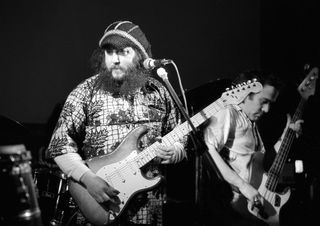
I know your many fans are delighted seeing you back onstage.
“Well, when I first started doing shows again, it felt really strange, but I’ve since experienced the joy of feeling what it’s like playing with other people again.”
It must be great having Nigel with you.
“Believe me or not, it’s really him having me with him, even though he’s more of a worldly person. He’s more of a realist who conducts matters over cold ground.”
When you’re performing, is it much easier having Nigel doing all the singing?
“Yes, it is easier, because I can concentrate more on guitar. I do like to sing, but I’d hardly consider myself a vocalist. I would hope to be considered a guitarist.”
Do you have any particular favorite blues guitarists?
“Well, I would start off with Skip James. And who’s the one who did the song about a candyman?”
I think you’re referring to Mississippi John Hurt.
“Yes, a great fingerpicking style, that right hand of his. What I’m into now is more the right hand of a player.”
Of course, you made a terrific tribute album to Robert Johnson [1998’s The Robert Johnson Songbook].
“You’re talking about a really great guitar player. Went through some very troubled times, but a great player. Absolutely.”
I have two Stratocasters, one of which I use for slide. I never thought I would do that, but the pickups sound so good. It sounds like Hawaiian guitar pickups
What type of gear are you currently using, starting with amps?
“Right now I’m using a [Fender] Prosonic with 10-inch speakers and 18-inch speaker cabinets. I’ve got a Vox that I don’t use any more, except sometimes in the studio. I used to have a Vox bass amp with a lot of treble settings that I used for my first guitar playing, and also a Fender Blues DeVille that went to my guitar tech.”
What about guitars? Are you still mainly using Stratocasters and your Howard Roberts Fusion?
“The Howard Roberts is still settling in nicely onstage, and I have two Stratocasters, one of which I use for slide. I never thought I would do that, but the pickups sound so good. It sounds like Hawaiian guitar pickups.”
And the Harmony Meteor?
“Oh, yeah, I’m still using that too. It’s a fabulous guitar, and I also have an Epiphone. I was using them both onstage together, which was interesting.”
And for guitar strings, nine or 10 gauge?
“I would never touch a nine or a 10. I actually prefer 11s or 12s, and at one time used 13s. Especially for slide, I prefer really heavy strings. And I also prefer playing without a pick, because I don’t want to have to think about it.”
Which guitars do you find work best for slide?
“I have a pink Stratocaster with a lovely suede case that was given to me as a birthday present from one of the boys at Fender. I use that mostly for rhythm. For the lead parts onstage I like to use my Seafoam Green Stratocaster.”
Are there any particular guitars that you find are better suited to studio work, and vice versa?
“No, I’m usually in the dark about things like that, so we try getting a balance between different ones, and if something doesn’t sound right, we’ll try something else. We do try using different guitars in the studio, so sometimes I find myself playing something that’s really strange to me.”
In some ways, I regret ever buying a Les Paul guitar. I sort of overshadowed Eric's breakthrough
Do you find as much enjoyment using acoustics in the studio as electrics?
“Whatever the tune is, I’ll have a go at it, and we’ll figure out what it needs. I do get nervous playing acoustics in the studio, because it’s very hard to get a good sound. Many times the sound comes out flat.”
You once said you’d never play a Les Paul again. What made you say that at the time?
“Well, l don’t know. It was an interesting thing to have, but a bit too heavy for me. The other day, I saw one and kind of liked it, so I might keep an eye out for another one. Sometimes when you’ve got something really perfect, you don’t realize it. I once had a mahogany one with an ebony finish and three pickups [a Les Paul Custom].
“I felt like buying it and sending it to Eric Clapton, but he’s probably already got one. In some ways, I regret ever buying a Les Paul guitar. I sort of overshadowed his breakthrough. I still feel sort of unaccomplished though, so I bought an electric piano to have in my house. I fiddle around with it. It’s quite nice, you know.”
When you saw the massive success Fleetwood Mac was having with the Rumours album, did you ever regret leaving and not being a part of it?
“Once or twice I felt if I was to go back with them, or just do something like a guest appearance at a few shows, that would be okay, but I guess I just needed a lift.”
How did it feel being with the group at the Rock and Roll Hall of Fame induction [in 1998]? Was that really a special thing for you?
“Nobody understands what that whole thing is all about. The Rock and Roll Hall of Fame… Inducted? Vinducted? Theraducted? I don’t really accept anything like that. I’ll have to think more about it and tell you the next time we talk.”
Is it harder now coming up with the inspiration for new songs?
“Not harder, but I’m always studying the development, or lack of development, in the old songs that I do. Always studying. That’s where my sort of creative forces of energies would be applying themselves to. It can be found there on the old songs that we do – see if we can improve on them in any way.”
I’m always studying the development, or lack of development, in the old songs that I do. Always studying
Looking back on the troubled times you’ve been through, do you have any personal regrets?
“No, I think it’s better to have suffered in life and been uncomfortable than comfortable. If you’re comfortable in life, I think the blues might evade you. Suffering is something holy, something very sad. If you grow up a rich kid with no problems, you miss a lot.”
When you left Fleetwood Mac, you felt that it was wrong for rock stars to make massive sums of money. Do you still think that’s true?
“No. Back then, the acidheads had a different opinion, but I have no proof that rock stars have any money. They’ve never given any to me or taken me to any lavish restaurants! It could be interesting to say that rock stars have a lot of money, to take away the original sin; if the rock star keeps on rocking, he’s going to be repeating himself. They all do seem to have something I haven’t got, but they can keep it. It’s something I don’t want. [laughs] It gets to be more than a curse.”
Get The Pick Newsletter
All the latest guitar news, interviews, lessons, reviews, deals and more, direct to your inbox!
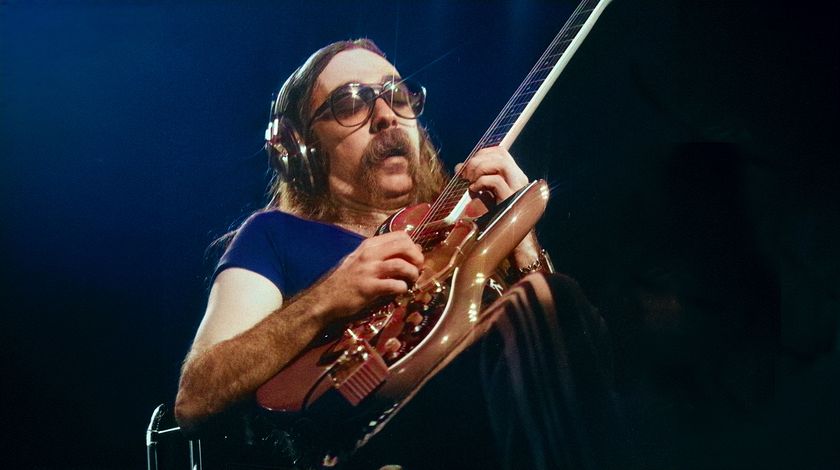
“I wanted to be the top gun of guitarists.” How Jeff “Skunk” Baxter ruled the 1970s session scene with Steely Dan and the Doobie Brothers
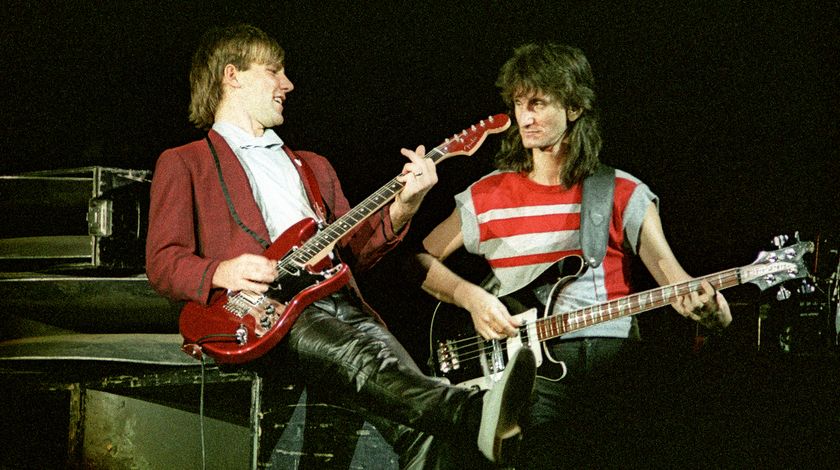
"It made me think and play differently, and it sounded great. But there were limitations.” Alex Lifeson explains how modding his Stratocaster led him to create one of his most iconic guitars

